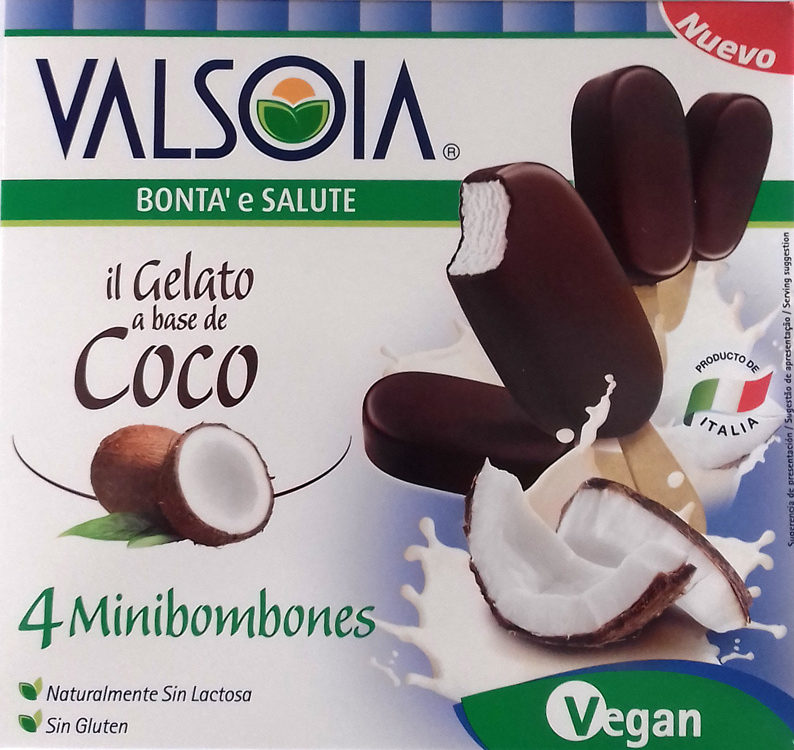Gelato a base de coco - Valsoia - 200 g (4 x 50 g)
This product page is not complete. You can help to complete it by editing it and adding more data from the photos we have, or by taking more photos using the app for Android or iPhone/iPad. Thank you!
×
Barra-kodea: 8006040140562 (EAN / EAN-13)
Izen arrunta: Helado vegetal a base de coco con cobertura (30%)
Kopurua: 200 g (4 x 50 g)
Ontziratzea: en:Plastic, en:Box, en:container, en:Frozen
Markak: Valsoia
Kategoriak: en:Plant-based foods and beverages, en:Dairy substitutes, en:Desserts, en:Frozen foods, en:Frozen desserts, en:Ice creams and sorbets, en:Plant-based ice creams, en:Plant-based ice cream bars
Etiketak, ziurtagiriak, sariak:
en:No gluten, en:Vegetarian, en:Vegan, en:Green Dot, en:No lactose, es:Producto de Italia
Manufacturing or processing places: Italia
Link to the product page on the official site of the producer: https://www.valsoia.it/prodotti/gelati-v...
Dendak: Carrefour
Saltzen diren herrialdeak: Espainia
Matching with your preferences
Ingurumena
Ontziratzea
Transportation
Report a problem
Datuen iturria
Product added on by neptuno
Last edit of product page on by packbot.
Produktuaren orria -gatik editatua acuario, kiliweb, musarana, yuka.UzZRQ0d2d1p2L1pXbnYxdjdEcnIrdFJWNWJ1SFhGUHBjL1kvSVE9PQ.











